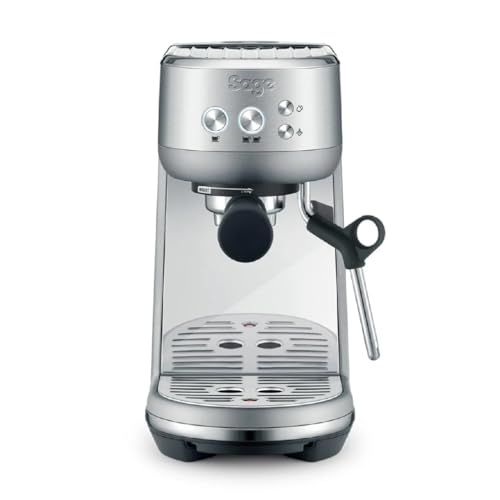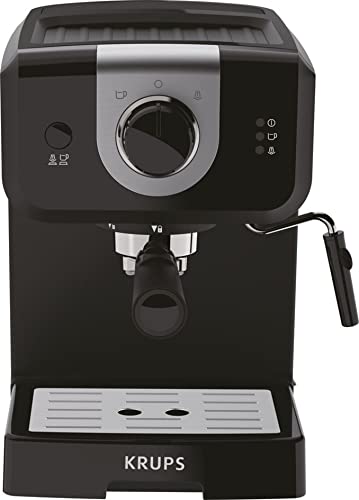You'll Never Be Able To Figure Out This Espresso Machine Coffee's Tric…
Essie
0
6
00:32
 How to Make Espresso Machine Coffee
How to Make Espresso Machine Coffee Espresso machines can make delicious cups of coffee, but it requires a little more installation and maintenance than a standard drip coffee maker. You must also grind and tamp the beans by yourself.
Espresso machines can make delicious cups of coffee, but it requires a little more installation and maintenance than a standard drip coffee maker. You must also grind and tamp the beans by yourself.The secret to making espresso is pressure. Here's how an espresso machine operates: a heating vessel heats water to the ideal temperature, and then pushes it through the grounds before pouring out the spouts.
Temperature
Espresso is made by forcing hot water under pressure through finely ground coffee beans. The temperature of water is essential to the final shot. Low temperatures can cause absence of flavor compounds. High temperatures can cause excessive extraction, which could cause bitter or burnt taste.
The ideal temperature for espresso is between 195 and 205degF. This temperature can be achieved using a grouphead that is designed to ensure a constant temperature and stability throughout the brewing process. The E61 is the most well-known group head because it offers temperature stabilty, pre-infusion capability, and lever control.
It is important to consider the temperature when you adjust your espresso machine for different roasts or brew ratios. This will affect the extraction yield and the crema. The ideal temperature will vary on the particular roast and bean, but the general rule is that lighter roasts and higher ratios of brews require higher temperatures than darker roasts and espresso machine coffee lower ratios of brew. A good thermocouple is also vital to maintain the same temperature.
Pressure
During the brewing process espresso machine coffee is pushed through finely ground and tamped grounds. This triggers chemical reactions which extract flavors, oils and other soluble elements from the beans. The resultant drink is usually more flavorful and richer than regular coffee.
The ideal espresso machine pressure is nine bar of pressure, which is equal to the atmospheric pressure at sea level. The soluble components in the espresso and filter coffee machine bean can be best extracted at this pressure.
Some espresso machines advertise up to 20 bars of pressure. These machines may be able reach these pressure levels but they may not maintain them throughout the extraction.
One bar of pressure equals to 32 pounds per square inch (PSI) of the tire of a car. This is more than four times the pressure that a professional cyclist utilizes to fill their bicycle tires. Any serious home barista must to be able to regulate the pressure of their espresso machine and make consistent espressos.
Water
The water that you use in your espresso maker is among the most important elements of a great cup of coffee. The correct water will allow your beans to extract their full potential. However the wrong water can cause problems such as clogged pipes, or damage to your expensive machine.
The best option is natural spring water that is rich in minerals that will ensure the best espresso machine with grinder extraction. This water will enhance the taste of your brew without the chalky mineral traces that come from tap water or bottled water. This is an excellent alternative to distilled or reverse osmosis water which can be too pure and cause issues with flavor.
You should not use a water filtering system that removes too much mineral content from the water you drink. This can lead to flavor and extraction problems. The best option is to purchase a water test kit which will give you the local average hardness. This information can be used to find the right filtration system for your espresso machine.
Beans
Most coffee drinkers tend to be extremely involved throughout the process of making espresso. They are obsessed with a range of variables, including temperature, water pressure, beans, milk, viscosity and other aspects. If one of the variables is slightly off, the entire shot may be sour.
The beans used are the most important element when it comes down to espresso. Many people believe that only certain kinds are suitable for espresso. While certain beans are suitable for certain uses but any coffee bean can be used to make espresso. espresso machine sale beans are roasted for longer than regular coffee beans, which is beyond the second crack. This creates a darker appearance and makes them more water-soluble.
The best beans for espresso are generally medium roasted or dark roasted, which give the shots their characteristic richness and boldness. However, it is possible to make excellent espresso using light-roasted beans, particularly if these beans are pre-ground (for convenience in the espresso machine).
Milk
Espresso and milk is a timeless combination. Not only does the coffee increase energy levels, but the steamed milk helps to offset the bitterness of the espresso and adds a delicious creamy flavor. There are few culinary pairings better than this one!
If you decide to purchase an espresso machine that is able to make cappuccino or latte, be sure to consider how easy it is to use. A lot of the top machines come with a jug for hot or cold milk and a steam wand. They also have a portafilter to pull the shot. Certain models also come with a built-in grinder along with a tamper, frother and tamper.
The steam wand needs to be cleaned prior to using it for the first time every day (or after every cup of retro espresso machine) to clear out any condensed water. This process can take about 30 seconds and is crucial to ensure that your machine is operating smoothly. If you don't flush this process, it could lead to a bitter taste and/or a buildup of bacteria, Espresso Machine Coffee which could alter the taste or smell of your beverage. It's easy to perform and should be part of your routine maintenance.
Comments
- The Underrated Companies To Follow In The Upvc Door Hinge Types Industry
- The Auto Key Locksmith Case Study You'll Never Forget
- https://freeporn.to
- Is It Time To speak Extra ABout Free Chat Gtp?
- How To Save Money On Pragmatic Play
- Guide To Power Tools Uk: The Intermediate Guide The Steps To Power Tools Uk
- 6 Practical Tactics to Show Chat Gbt Try Into a Sales Machine
- 글이 없습니다.
반응형 구글광고 등






